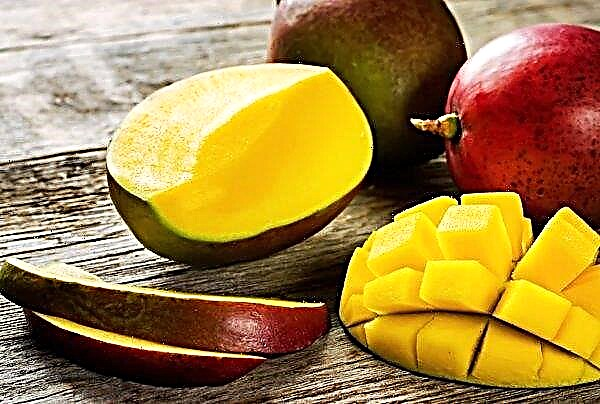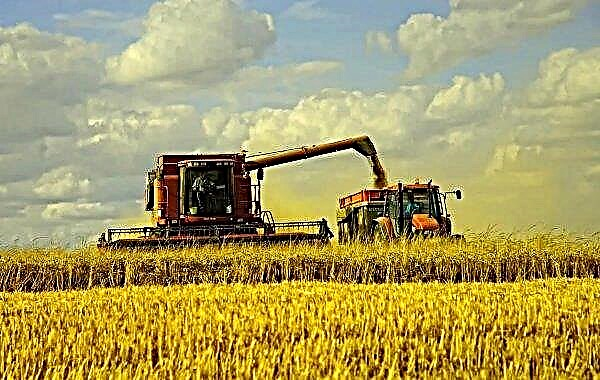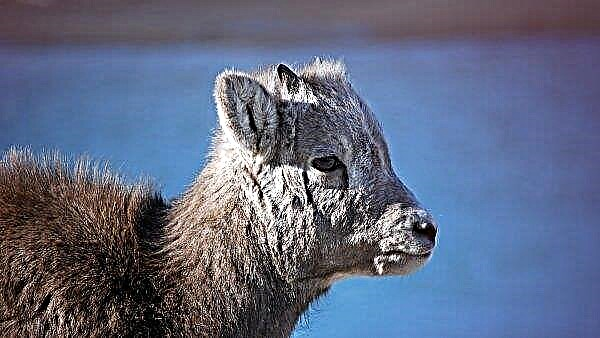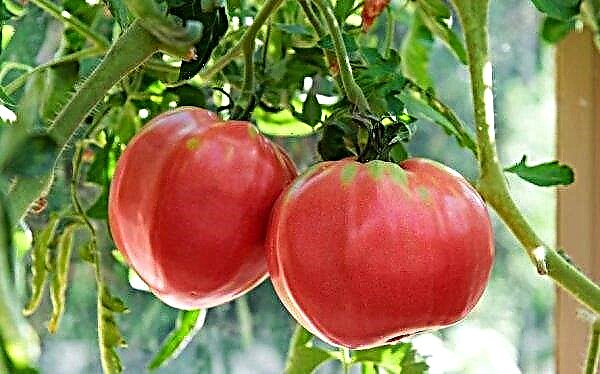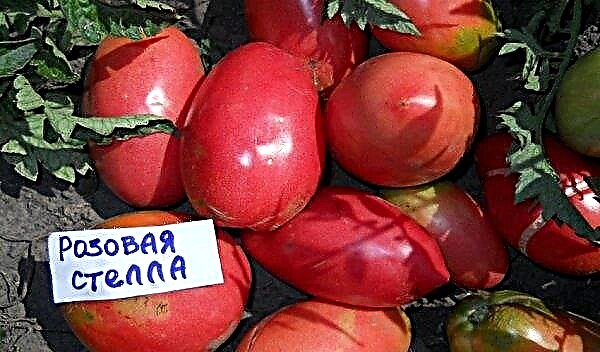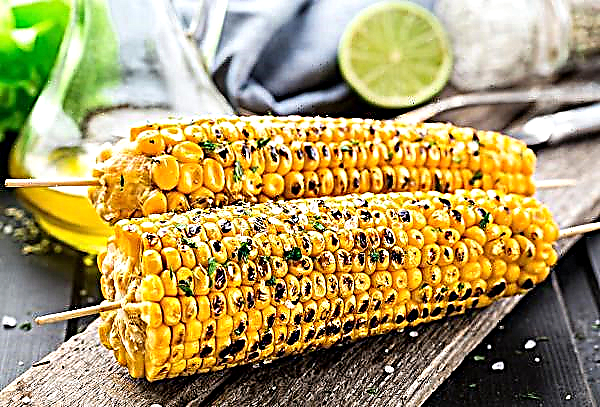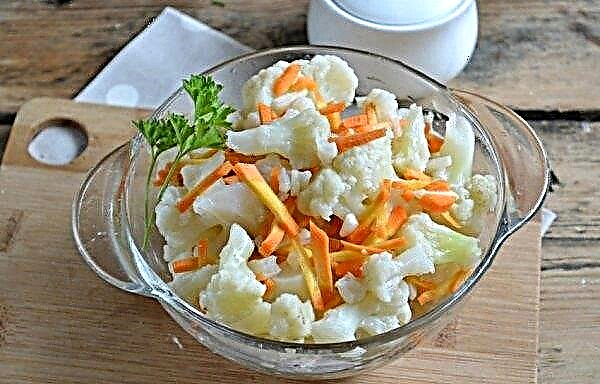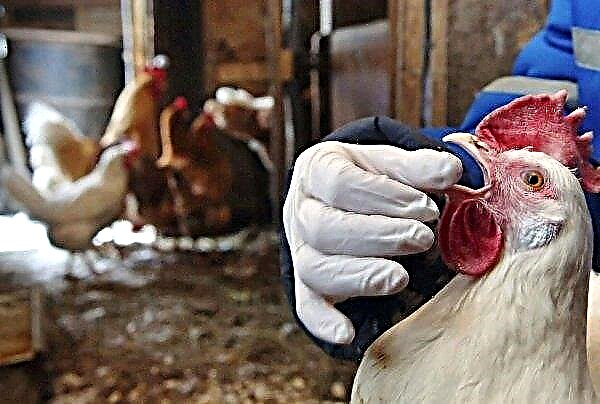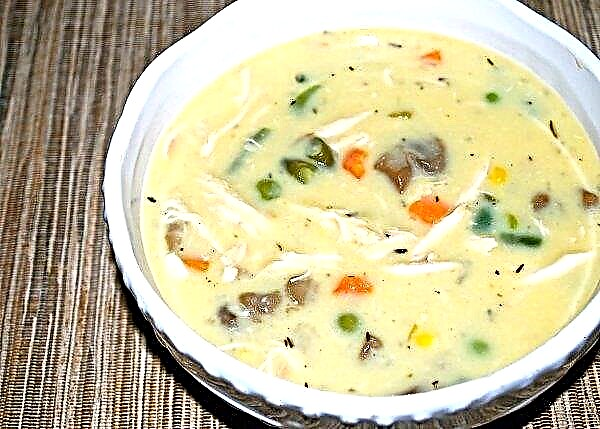One of the disadvantages of early varieties of apples is their short shelf life - in fact, most of these varieties of apples are intended only to be eaten or processed immediately. Piros is a rather early variety, but at the same time it has a pleasant and such an important bonus - it is stored much better than most early varieties.
Botanical characteristic
The Piros apple tree was bred in 1963 at the Dresden-Pilnitz Institute of Horticulture by crossing Helios and Apollon. Known in Germany since 1985. Piros belongs to the early grades. Tree growth, in the first few years, is notable for its intensity, which decreases over time. The tree is medium-sized, with a large spreading crown. The fruit is round, medium sized, has the shape of a cylinder, the average weight is 140-150 g. Piros begins to bear fruit quite early, the yield is not too plentiful, but stable. Apples of about the same size usually grow on a tree. Fruit color - yellow-green, integumentary color, occupying from half to two thirds of the surface of the apple, burgundy. Creamy pulp of dense consistency with a high juice content. The taste is typical of apple, sweet and sour with a pronounced pleasant odor and light notes of caramel. The fruits ripen in the II-III decades of August, the crop is harvested in the first half of September.
Piros begins to bear fruit quite early, the yield is not too plentiful, but stable. Apples of about the same size usually grow on a tree. Fruit color - yellow-green, integumentary color, occupying from half to two thirds of the surface of the apple, burgundy. Creamy pulp of dense consistency with a high juice content. The taste is typical of apple, sweet and sour with a pronounced pleasant odor and light notes of caramel. The fruits ripen in the II-III decades of August, the crop is harvested in the first half of September.
Did you know? Piros is considered the first summer variety (early), the fruits of which are fairly well stored.
It should be said that usually several harvests are required, since the fruits do not ripen all at once, but gradually, in batches. Piros tolerates winter frosts rather poorly. As for the immune system, its feature is a very high resistance to a bacterial burn, at the same time, to most other diseases typical of apple trees, the immunity is weak. Piros is a self-infertile variety, for the normal formation of ovaries and, accordingly, fruits, he needs pollinators. Among pollinating plants, the following varieties should be distinguished:
- Apollo;
- Golden Delicious;
- Mac;
- Helios;
- Champion;
- Vista Bell et al.

Piros itself, as a pollinator, is suitable for the following grades:
- Idared
- Naidared;
- Pilot;
- Reglindis.
Did you know? The largest apple in the world weighed 1850
Advantages and disadvantages of the variety
- Advantages typical for Piros apples:
- great taste apples;
- early bearing
- fairly high stable yield;
- good appearance;
- long fruiting period;
- good resistance to certain diseases.
- Has this variety and some disadvantages:
- low resistance to most diseases;
- poor winter hardiness.
Video: Piros apple tree
Landing and preparation for it
The process of planting apples and preparing for it is almost the same as that applied to other varieties of apples. The main points and some features of the landing will be described below.
We recommend that you familiarize yourself with the summer varieties of apple trees:
Optimal timing
Like other apple trees, Piros can be planted in autumn, or planting can be carried out in spring. When to plant a tree, it is up to you to say just a few words about the advantages and disadvantages of both methods. In autumn, a tree is planted a month before the first frost in your area. Finding out a more accurate date when frost should be expected is easy. Among the advantages of autumn planting, it should be noted that the tree has time to take root before serious cold comes. After that, during the winter, its root system develops (in winter the tree does not fall into absolute suspended animation, certain processes occur in it, although very slowly) and grows stronger. It is necessary to plant an apple tree at least a month before the onset of frost, when the foliage is already completely fallen. Spring, as soon as sap flow begins, the plant will immediately begin to gain green mass, instead of wasting time and energy on root growth. As a result, the early Piros variety will bring an even earlier harvest, in addition, planting under the winter has a positive effect on the plant's immunity. Another factor in favor of autumn planting is this: in the fall, nurseries most often dig seedlings for subsequent sale. That is, at this time, planting material is the freshest, there is a large selection and prices are usually lower.
It is necessary to plant an apple tree at least a month before the onset of frost, when the foliage is already completely fallen. Spring, as soon as sap flow begins, the plant will immediately begin to gain green mass, instead of wasting time and energy on root growth. As a result, the early Piros variety will bring an even earlier harvest, in addition, planting under the winter has a positive effect on the plant's immunity. Another factor in favor of autumn planting is this: in the fall, nurseries most often dig seedlings for subsequent sale. That is, at this time, planting material is the freshest, there is a large selection and prices are usually lower.
Important! Remember that Piros needs pollinators. It is desirable that these are 2-3 varieties of the above, or others that are close in terms of flowering. If similar varieties do not grow on the site, it is better to purchase them here, in the nursery.
In the spring you will choose from what remains of the fall, only these seedlings will be already six months older. And no matter how well they were stored for six months, this circumstance will not add to their health. However, not everything is so simple with the autumn landing. If, during the rooting period, an apple tree falls under the influence of night frosts, this can adversely affect it. In addition, a snowless winter may be issued, or the frost will be too strong. A young plant may not tolerate such conditions and die, Piros does not have good winter hardiness. Rodents pose a threat. Planting an apple tree in autumn is considered the best time. In general, it is up to you to decide which planting (in spring or autumn) to prefer. If you live in regions with rather severe winters and early frosts, it is better, of course, to plant an apple tree in spring. In more southern latitudes, you can resort to an autumn landing. Tentative periods are as follows: in autumn - September, a month before the first frosts, in spring - March, before the buds begin to swell.
Planting an apple tree in autumn is considered the best time. In general, it is up to you to decide which planting (in spring or autumn) to prefer. If you live in regions with rather severe winters and early frosts, it is better, of course, to plant an apple tree in spring. In more southern latitudes, you can resort to an autumn landing. Tentative periods are as follows: in autumn - September, a month before the first frosts, in spring - March, before the buds begin to swell.
Choosing the best seedling when buying
How much quality planting material you get depends on which tree you grow as a result of. Sapling should be purchased in a nursery, or from a well-known breeder who values his reputation.
When choosing a seedling, try to follow these recommendations:
- seedling age - one-year, in extreme cases, two-year-old;
- on the trunk and roots there should not be the slightest sign of dryness, under the brown outer layer of the bark, there should be a fresh green layer;
- sufficiently moist, light, almost white, roots, without breaks (can be covered with a special mixture that allows the tree to be without water for a week).

Choosing a place to plant an apple tree
When choosing a place for planting an apple tree, you should remember about some important factors:
- the place should be lit from all sides by the sun;
- it is desirable that this was a low hill or a gentle slope in a southerly direction, closed to the winds from the north (green spaces, buildings);
- occurrence of groundwater not higher than 2 m from the surface;
- the nearest tree should be no further than 4-6 meters.
As for the soil, the apple tree normally grows on almost all types of soil with a neutral or slightly acidic pH. If sand prevails in the selected area, moss will have to be placed at the bottom of the landing pit to retain moisture. Peat or clay soils, areas with a high level of groundwater are not the best option, in this case you will have to make an embankment from the fertile substrate on which the tree will be planted.
If you decide to plant an apple tree in the spring, it is better to dig a hole in the autumn, after all autumn gardening. And before you go in for the pit, it will be advisable to prepare the ground for the future apple tree. When digging the area deep, remove, if possible, all weed grass, and add the following composition to each square meter of area:
- humus - 0.5 buckets;
- compost - 0.5 buckets;
- ash - 0.5 shovels;
- superphosphate - 3 tbsp. l;
- potassium nitrate - 2 tbsp. l
 In the event that the soil acidity is at a pH of 5.8 or lower, add 1/2 shovels of dolomite flour to the indicated ingredients. After 18-20 days after digging the site, you can dig a hole, its dimensions are 0.8 × 0.8 × 0.8 m. When you dig a hole, the top layer, 20-25 cm thick, lay in one direction, everything else - to another. After the pit has been dug up, drainage from crushed stone and sand should be placed at its bottom (if the soil is sandy, the bottom should be covered with moss).
In the event that the soil acidity is at a pH of 5.8 or lower, add 1/2 shovels of dolomite flour to the indicated ingredients. After 18-20 days after digging the site, you can dig a hole, its dimensions are 0.8 × 0.8 × 0.8 m. When you dig a hole, the top layer, 20-25 cm thick, lay in one direction, everything else - to another. After the pit has been dug up, drainage from crushed stone and sand should be placed at its bottom (if the soil is sandy, the bottom should be covered with moss).
On a drainage or moss spread a layer (up to 1/2 pit depth) of this composition:
- topsoil (deposited when digging a hole) - 2 buckets;
- humus - 1 bucket;
- compost - 1 bucket;
- potassium salt - 3 tbsp. l .;
- superphosphate - 3 tbsp. l
Important! The time between the acquisition of a seedling and its planting should be reduced to a minimum. If there is no way to plant a tree immediately, its root system is wrapped with a wet rag, periodically moisturizing it.
After a fortnight, the remainder of this mixture is poured into the bottom, poured from the prepared soil mixture, in the form of a hill. A stake about 1 meter high is driven into the side of the top of the knoll. Then the pit is closed with spruce branches and left until spring. If the apple tree is planted in the fall, digging the ground, fertilizing and then planting a seedling a month before the onset of frost - you will not have time.
In this case, they proceed immediately to the excavation of the landing pit. This should be done at least 16-18 days before the planned tree planting. This is necessary in order for the pit to settle. All other activities are the same as for the preparation of the pit for spring planting.
Video: preparing the landing pit
Landing technology
Regardless of what time you chose to plant the tree, autumn or spring, by the time the procedure is carried out, there should be a prepared hole. At the bottom of the depression there should be drainage (on sandy soil - moss), on top of the drainage - a layer of soil mixture or a fertile upper cut, on which a hill of the same soil rises. A little bit far from the center of the pit is installed. 1 - upper fertile soil layer; 2 - the upper fertile soil layer with the addition of humus and mineral fertilizers; 3 - soil layer without fertilizers; 4 - the root neck (the place of transition of the root system into the trunk)
1 - upper fertile soil layer; 2 - the upper fertile soil layer with the addition of humus and mineral fertilizers; 3 - soil layer without fertilizers; 4 - the root neck (the place of transition of the root system into the trunk)
Planting a tree is performed as follows:
- Set the seedling with the base of the trunk on top of the hill, spread the roots along its slopes.
- Fill the tree with the soil remaining after digging the hole (bottom layer), periodically tamping the soil.
- Around the barrel make a circular embankment (height - 12-15 cm, radius - 35-40 cm), tie the barrel to the stake.
- Water each tree with 2-3 buckets of warm water. After the water is absorbed, mulch the trunk circle with sawdust, peat or straw.
Video: instructions for planting an apple tree
Care Features
Apple care consists of the main procedures:
- glaze;
- fertilizer application (top dressing);
- crown care (cropping, thinning, crown formation);
- preparation for winter.
Did you know? An apple tree is grown almost all over the world, and on 80 emblems there is an image of this fruit.
Watering
The first time a tree is watered immediately after planting. Then the procedure is carried out as necessary, it all depends on the amount of precipitation. In rainy spring and summer, you can do without watering at all. To determine the need for additional watering, a straight twig with the thickness of a pencil should be removed from the bark and made notches on it. Such a "probe" must be immersed in the soil by 15-20 cm. After watering, loosening and mulching of the soil is mandatory. The root horizon of the root system begins from 13-15 cm, it is important that the soil is moistened at this depth. If it is dry higher (6-10 cm deep) - this should not cause concern. If the part of the stick that corresponds to such a depth is covered with traces of dirt, there is no need for watering. If the probe is deeper than 13-15 cm dry (no dirt, no moisture), water the tree.
After watering, loosening and mulching of the soil is mandatory. The root horizon of the root system begins from 13-15 cm, it is important that the soil is moistened at this depth. If it is dry higher (6-10 cm deep) - this should not cause concern. If the part of the stick that corresponds to such a depth is covered with traces of dirt, there is no need for watering. If the probe is deeper than 13-15 cm dry (no dirt, no moisture), water the tree.
They recommend watering the tree according to the following scheme:
- Half a month after the apple tree fades.
- In the time interval, as the ovaries begin to transform into fruits.
- The period of filling apples.
- Pre-winter watering.
Important! You can not water the apple tree during flowering or immediately after it, it is fraught with the appearance of rot and fungus. In addition, excess moisture negatively affects the formation of ovaries.
Fertilizer application
Top dressing is an essential element of tree care. They not only contribute to better productivity, but also increase the immunity of the apple tree, and therefore, resistance to pests and resistance to diseases. In the first growth season of the apple tree, it is not necessary to feed it. Top dressings are root and extra root, for their use organic matter and mineral fertilizers. Foliar top dressing gives a fairly quick result. They are performed at least twice during the growing season, it is better to carry out the procedure every 20-25 days. When carrying out foliar top dressing (spraying), fertilizers are applied not to the trunk circle, but directly to the leaf plate. For foliar top dressing of the apple tree, 0.3% carbamide solution (nitrogen top dressing) is used. When the tree grows, for 3-4 season, the concentration of urea is increased to 0.5%. Foliar feeding of phosphorus consists in spraying with superphosphate. When preparing a solution for the procedure, remember the very poor solubility of phosphates in water. Fertilizer should be poured with boiling water (3 g of superphosphate / 1 liter of boiling water). Foliar potassium top dressing is carried out with a 1% solution of potassium sulfate.
When carrying out foliar top dressing (spraying), fertilizers are applied not to the trunk circle, but directly to the leaf plate. For foliar top dressing of the apple tree, 0.3% carbamide solution (nitrogen top dressing) is used. When the tree grows, for 3-4 season, the concentration of urea is increased to 0.5%. Foliar feeding of phosphorus consists in spraying with superphosphate. When preparing a solution for the procedure, remember the very poor solubility of phosphates in water. Fertilizer should be poured with boiling water (3 g of superphosphate / 1 liter of boiling water). Foliar potassium top dressing is carried out with a 1% solution of potassium sulfate.
In late June and early July, during the period of fruit formation, fertilizing with potassium and phosphates is carried out. They are necessary to optimize the metabolism in the apple tree. The procedure is performed by the foliar method in the early morning or after sunset. In the spring, the tree is fertilized in this way: one of the fertilizers listed below is evenly distributed on the soil, in a circle corresponding to the crown projection
In the spring, the tree is fertilized in this way: one of the fertilizers listed below is evenly distributed on the soil, in a circle corresponding to the crown projection
For these purposes, apply such means (per tree), such as:
- humus - 3-4 buckets;
- ammonium nitrate - 3 tbsp. l;
- urea - 4 glasses.
Important! A small amount of nitrate (3 tbsp. L.) Is not easy to evenly distribute around the perimeter of the crown. In order to facilitate the task, the fertilizer can be pre-mixed thoroughly with 1.5-2 liters of earth. This amount of the finished mixture is much easier to sprinkle evenly.
In summer, it is necessary to make maximum use of all the minerals necessary for the normal life of the apple tree. After all, it was at this time that the tree forms the ovaries, he really needs strength. For summer root dressings, organic and mineral fertilizers alternate. Mineral potash and phosphorus fertilizers (per tree):
- superphosphate - 5 tbsp. l .;
- potassium sulfate - 4 tbsp. l .;
- water - 1 bucket.
Fertilizers completely dissolved in warm water and pour into the trunk circle. For the preparation of top dressings from organics, it is necessary to carry out the following procedures:
- Take 1 kg of droppings or mullein, fill with the same amount of water and mix well.
- Place the container with the future fertilizer in a warm place, closed from direct sunlight.
- After 14-16 days (the characteristic smell will tell about readiness), the fertilizer is ready.
- Take fermented excrement (at the rate of 1 glass per 1 tree), dissolve in a bucket of water, mix well and pour into the trunk circle.
 Liquid food is recommended to be added to the apple cake only in cases where there is a good weather. If the conditions are rainy, then you can use a fresh form of food. Urea (100 g / 1 bucket of water) is also used as root dressing. For autumn fertilizer, apple trees use potassium and phosphorus. From organics, you can apply humus, compost, peat. To do this, 3-4 buckets of the nutrient mixture should be evenly distributed in the trunk circle. During the autumn digging of the garden, 1 glass of wood ash is applied per square meter of area.
Liquid food is recommended to be added to the apple cake only in cases where there is a good weather. If the conditions are rainy, then you can use a fresh form of food. Urea (100 g / 1 bucket of water) is also used as root dressing. For autumn fertilizer, apple trees use potassium and phosphorus. From organics, you can apply humus, compost, peat. To do this, 3-4 buckets of the nutrient mixture should be evenly distributed in the trunk circle. During the autumn digging of the garden, 1 glass of wood ash is applied per square meter of area.Important! It is more expedient to apply liquid top dressing in dry weather, and use dry granules during the period of precipitation.
For 3-4 season tree life, tinning can be done. The procedure improves the structure of the soil around the trunk and prevents the growth of weed grass, and therefore reduces the risk of the onset and development of diseases and the appearance of pests. For tinning, it is necessary to remove all weeds from the near-stem circle, then loosen the soil and add any nitrogen fertilizers to it
For tinning, it is necessary to remove all weeds from the near-stem circle, then loosen the soil and add any nitrogen fertilizers to it
Pruning
Pruning can be sanitary and stimulating. Sanitary pruning is performed so that the crown does not overgrow with extra shoots. The presence of a large amount of excess shoots contributes to the appearance of pests, chopping apples, and prevents uniform heating of the tree by the sun and normal aeration. Such pruning should be done at least once a year, preferably twice - in spring and autumn. a - shortening of shoots in the first year; b, c - molding pruning of crown shoots along a given contour; g - sanitary pruning (removal of dry branches); d - pruning and thinning in order to improve aeration (the dashed line shows the growth of new branches after two years); e - rejuvenation of old treesThe main points that should be given attention during the procedure:
a - shortening of shoots in the first year; b, c - molding pruning of crown shoots along a given contour; g - sanitary pruning (removal of dry branches); d - pruning and thinning in order to improve aeration (the dashed line shows the growth of new branches after two years); e - rejuvenation of old treesThe main points that should be given attention during the procedure:
- remove dry and damaged branches;
- shoots, the growth of which is directed inside the crown;
- if the branch is large enough, and only part of it is damaged or dry, this place must be removed and the cut treated with garden var.
Check out

Stimulating pruning contributes to better growth and development of the tree. When carrying out it, you should remember this principle of this procedure: the more you cut off, the better the remaining will grow.
This event is mandatory if some branches have been frostbite, or some of them are diseased.
Affected by frost or disease, shoots are cut to 2/3 of the length. This procedure is also anti-aging. There are several popular and effective methods of crown formation, among which are the following:
- sparse-tier;
- bowl;
- vertical palmette;
- spindle.
Important! When performing crown formation, follow this rule: cut the shoots that grow vertically upward and those whose growth is directed inside the crown. Leave should be branches growing in a plane close to horizontal, out.
Winter preparations
Preparing the tree for winter begins shortly after harvesting. The tree is inspected for possible diseases and the presence of pests, pruned, dry branches, dry bark areas are removed. Then it is necessary to completely remove all the fruits (rotten, spoiled) from the tree and around it - these are potential sources of disease and bait for pests. After complete shedding of foliage and pre-winter irrigation, they begin directly preparing for winter. To begin with, you should whiten the bole. If the trunk turns gray after drying, then whitewashing is recommended to be repeated so that the shade becomes more saturated and uniform. This procedure helps protect the trunk from frost (whitewashing, filling the pores and microcracks of the cortex, prevents the penetration of moisture into them, which, when frozen, destroys the bark), parasites and rodents, as fungicide is added to it. In addition, white color reflects sunlight well, which can cause burns to a young tree. Many whitewash compositions are known, the simplest of which consists of equal parts of slaked lime and clay with the addition of copper sulfate. Shortly before the onset of frost, the trunk is insulated.
If the trunk turns gray after drying, then whitewashing is recommended to be repeated so that the shade becomes more saturated and uniform. This procedure helps protect the trunk from frost (whitewashing, filling the pores and microcracks of the cortex, prevents the penetration of moisture into them, which, when frozen, destroys the bark), parasites and rodents, as fungicide is added to it. In addition, white color reflects sunlight well, which can cause burns to a young tree. Many whitewash compositions are known, the simplest of which consists of equal parts of slaked lime and clay with the addition of copper sulfate. Shortly before the onset of frost, the trunk is insulated.
Perform the procedure as follows:
- On the perimeter around the trunk, at a distance of 18-20 cm, 4 pegs are driven into the ground. The height of the pegs should be slightly below the lower branches of the tree. From the outside, the pegs are wrapped with roofing material, which is fixed with a wire.
- The space obtained inside the roofing material is filled with sawdust, they mulch the trunk circle. For mulching, you can take peat, straw for winter mulch will not work - it attracts rodents.
- After the first snow falls, they spud an apple tree to the lower branches.
 You can simplify the warming procedure, and do this by wrapping the trunk with synthetic insulation (agrofibre or synthetic winterizer), then corrugated cardboard, outside - roofing material. The trunk circle is mulched in the same way as in the first case - peat or sawdust.
You can simplify the warming procedure, and do this by wrapping the trunk with synthetic insulation (agrofibre or synthetic winterizer), then corrugated cardboard, outside - roofing material. The trunk circle is mulched in the same way as in the first case - peat or sawdust. Above the circle and the stamb can be covered with spruce
Above the circle and the stamb can be covered with spruceGrade Diseases and Pests
The diseases and pests that pose a danger to Piros are the same, which are a threat to apple trees of other varieties. Among the most common diseases, the following should be highlighted:
If the summer was rainy, the risk of occurrence and development of scab is high. If there are signs of the disease (foliage is covered with red spots, apples are deformed, black spots appear on them), all affected parts of the plant should be taken out of the area and disposed of.
To minimize the risk of disease, regularly conduct the following procedures:
- top dressing root and foliar (strengthening the immune system of the tree, they contribute to the strengthening of protective functions);
- to inspect the apple tree, the purpose of which is to detect signs of disease and the appearance of pests. The sooner the problem is discovered and the fight against it is started, the higher the chances of success;
- do not forget about the whitewashing of the stem and skeletal branches, this procedure not only protects against frost, but also prevents the spread of parasites;
- thinning the crown (a potential source of pests), remove dry branches, bark, foliage, rotten fruits;
- spring and autumn sanitary and stimulating pruning.
Important! Nitrogen fertilizers should not be applied in the fall, as they, by stimulating the growth of green mass, reduce winter hardiness. Piros and so does not tolerate frosts very well, and after using nitrogen, the tree can generally die in winter.
In March, before the sap flow, and after the autumn leaf fall, the apple tree is treated with a 5-7% urea solution. This is a fairly effective measure that prevents the development of rust. At the same time, the plants are treated with a 1% solution of Bordeaux fluid. If preventive measures did not help, you should pay attention to the following drugs:
- "Zircon";
- "Speed";
- "Fundazole";
- Delors or the like.
Pests for which Piros is a desirable target are also traditional:
As a means of combating parasites and pests, the following drugs are used:
- "Fufanon";
- Confidor
- "Actellicus."
It should be said that despite the rather weak immunity of the variety, the observance of sanitary measures in the garden, the regular harvesting of weeds, thinning of the crown and the implementation of other preventive measures, significantly reduce the chances of developing diseases and the appearance of pests.
Harvesting and storage
As you know, early varieties of apples do not differ in the long shelf life of the fruits. Piros can be called an exception, he, of course, does not have the stubbornness of winter varieties, but in appropriate conditions it will last until winter. In order to extend the shelf life of fruits, remember some simple rules:
- for storage, you should collect slightly unripe fruits, whole, without damage and deformation;
- remove the apple from the branch with the stalk;
- pick fruit for storage in dry sunny weather, preferably a few days after rain, when the fruit dries.
 Apples left for storage are placed in the refrigerator, or poured into wooden boxes, which are placed in the basement or cellar. The fruits should be inspected periodically, if they begin to deteriorate, they should be removed. We must not allow damaged or rotten apples to be stored together with high-quality apples - this can ruin the entire batch.
Apples left for storage are placed in the refrigerator, or poured into wooden boxes, which are placed in the basement or cellar. The fruits should be inspected periodically, if they begin to deteriorate, they should be removed. We must not allow damaged or rotten apples to be stored together with high-quality apples - this can ruin the entire batch.Did you know? Apples are best stored in a dark place with a temperature of 0 ... + 3 ° C and an air humidity of 75-90%.
Despite the fact that Piros has weak immunity and not the best tolerance of frosts, the taste qualities of the variety and its stable and fairly good yields more than compensate for all the shortcomings. In addition, the variety is quite well studied and unpleasant surprises when growing it should not be expected.

